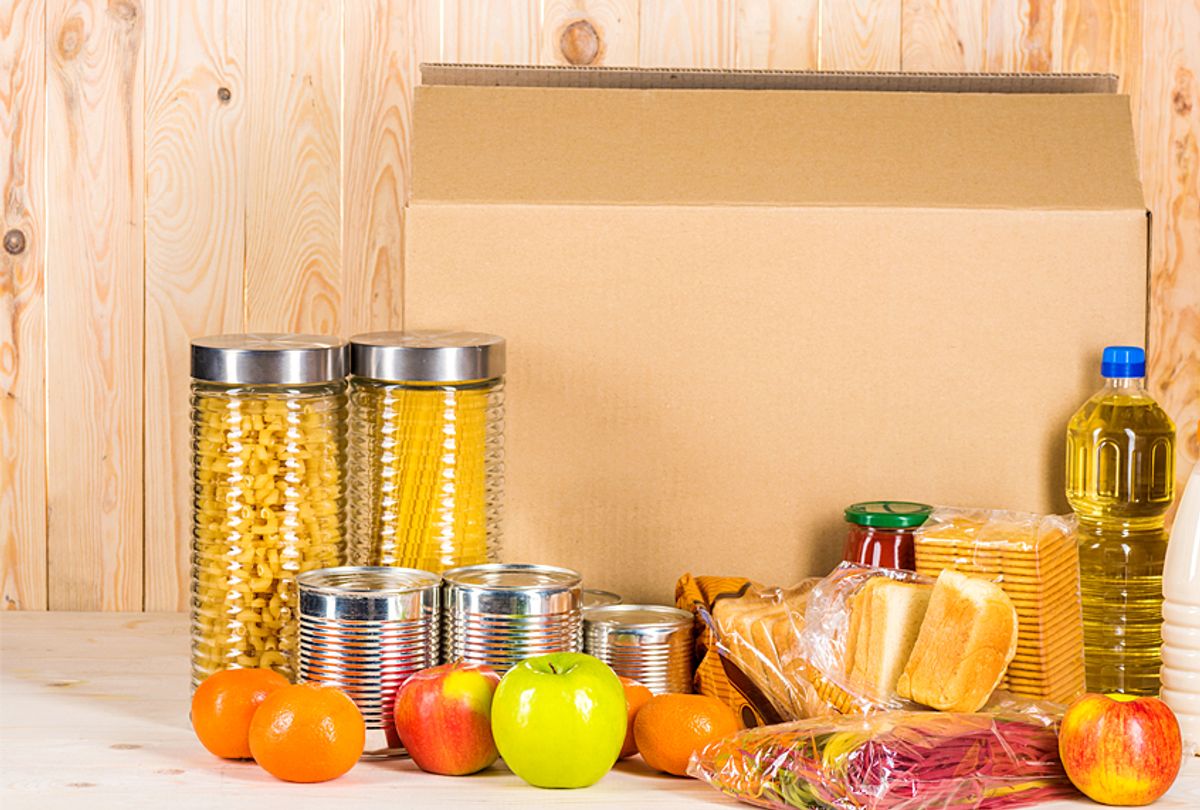The Harvest Box — the so-called "Blue Apron for poor people" that existed as an apple of the Trump administration's eye for a brief moment in time — is Schrodinger's Food Stamps. By which I mean, it existed in a state of PR flux: it was the next best big thing for the government to reform, then suddenly it wasn't being seriously considered anymore.
Yet, Harvest Box seems to be a real thing, because on Monday, Brandon Lipps, the USDA's acting deputy undersecretary for food nutrition and customer services came out with a USA Today op-ed in support of the plan. And if the administration is wheeling out the bigwigs, you know they think it's important.
The op-ed is light on actual details — the things that people want to know. For instance, how does someone get government cheese delivered to their door, and how do they make this palatable? And who will be paid for shipping all this delicious food to your front door?
Sadly, that last question is left wide open. But Lipps does have a great shipping analogy that he'd like to use instead:
They probably laughed at Fred Smith when he conceived of FedEx and the efficient distribution of packages to customers. In Washington, it is a favorite pastime to criticize new ideas and claim they won’t work. But innovation has always been one of the keys to success, and innovation is what America’s Harvest Boxes represent.
The op-ed is nothing more than a promotion for something that doesn't exactly exist yet, and likely won't exist. While the op-ed boasts about recipients' "ability to make food choices for themselves," it doesn't get into how it would do this. Is there a catalog somewhere that facilitates "shopping" for groceries? Will this whole scheme be online? And, more importantly, will these Harvest Boxes be subject to market pricing — meaning, if there's a spike in the price of canned green beans, will they suddenly become unavailable?
Instead of details, Lipps' op-ed treats readers to standard-issue pro–free market doublespeak:
Recipients will retain the ability to make food choices for themselves. America’s Harvest Boxes will use our agricultural abundance to provide wholesome staple foods, while allowing people to make their own food purchases with the remaining portion of their SNAP benefits. Because states know their populations best, they will have the flexibility to offer food options for people with differing dietary needs.
One thing we do know about the Harvest Boxes: the federal government is hands-off, and wants to let the states manage them. Likewise, there are hints in the op-ed of privatized facets to this scheme; Lipps mentions both "non-profits or the private sector" as being involved:
As true laboratories of innovation, states can determine their own methods of connecting people with their Harvest Boxes. Some may choose to partner with non-profits or the private sector to arrange for boxes to be picked up at non-profit or retail outlets, while others may work with private sector innovators to deliver boxes to doorsteps.
Harvest Boxes: Empty calories and leaving us hungry.



Shares